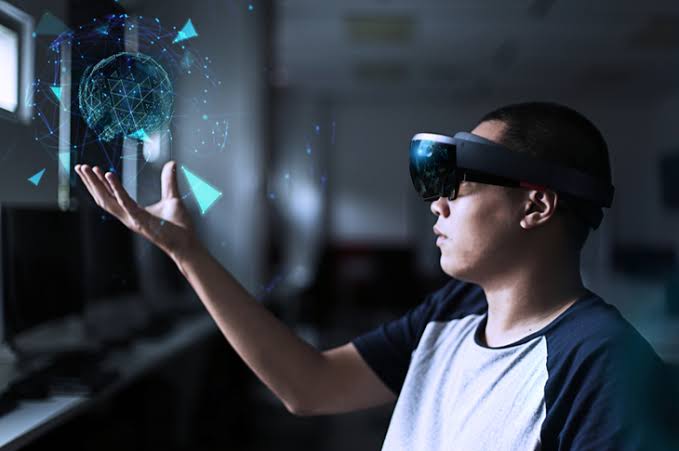The discussion of augmented reality and virtual reality is becoming more popular. Most of us comprehend these technologies in terms of entertainment and games, but eLearning enthusiasts are aware of their impact. AR makes it possible to use digital content in a real environment, as opposed to VR, which offers a completely digital environment. The true potential of AR and VR is being realized by businesses of all sizes, which has increased interest in and adoption of these technologies among the modern workforce.
Significant advancements in VR and AR for education have been made over the past few years. Instructional designers can now incorporate virtual environments and situations into eLearning to produce interactive, real-world learning experiences. Nowadays, simulated office settings and job role scenarios help the workforce develop real-world expertise. They might interact with things they see at work, like sales connectors, machines, and safety equipment, using virtual reality.
For gathering and analyzing data from LMS systems, such as learners’ strengths, weaknesses, interests, and competencies, AI is currently playing a crucial role. With the aid of AI, users’ learning paths can be thoroughly examined and researched. Businesses and large organizations use AI to build voice-activated chatbots that support content search. It will improve learners’ learning experiences and make it simpler for them to find the courses they want.
You can record, track, administrate, and deliver training courses for your staff members at the right time by selecting an appropriate LMS like Litmos. It also aids in developing a company’s learning culture and determining training requirements.
Utilizing AR and VR in eLearning: Useful Techniques
- Improved online training simulations
To prevent workplace injuries and accidents, AR and VR are being used in online compliance training and learning simulations for safety operations. This allows learners to access a virtual learning environment and connect with virtual components in real-life scenarios. For instance, you can indeed simulate a compliance safety scenario to see how your learners are performing.
- Analytics for Advanced Learning
The use of AR and VR technology has made data collection in eLearning easier than ever. As a result, courses can now more accurately assess learner engagement and use it to design a learner-worthy course by monitoring their eye contact to gauge their attention span in the training program.
- Assessments for online learning with visual feedback
Online simulations, branching scenarios, and other types of assessment are encouraged by VR technologies to enhance evaluation. Your learners may be instructed on how to complete a procedure correctly if they omit a step and are allowed to retake the test later, eliminating any room for doubt or misunderstanding.
- Immersive game-based learning in online courses
Your learners can move up leaderboards and receive tangible badges and awards using AR and VR technology. This allows them to interact with the points and rewards and even touch them with their hands.
Read Also: 5 Reasons You Should Use Resealable Packaging
- Individualized Learning Paths
With the help of AR and VR, learners can explore a learning path and interact with resources, choosing activities and courses that will help them become better decision-makers.
These are just five of the many ways that AR and VR can be incorporated into eLearning. Additional options include interactive product demonstrations, virtual case analysis, problem-centric scenario-based learning, virtual tours of your workplace, and more. Even though virtual and augmented reality may currently appear out of reach for many, thanks to recent advancements in AR and VR, everyone will be able to access these fun learning experiences.
Conclusion
The incorporation of augmented and virtual reality into a learning management system and other software improves staff members’ accomplishments and provides additional tools for mentors to assess their progress. In addition to providing clear and convincing advantages for your company, it also enables you to identify your learners’ areas for improvement to focus your learning efforts. For your LMS, AR and VR create a fresh, engaging environment.



